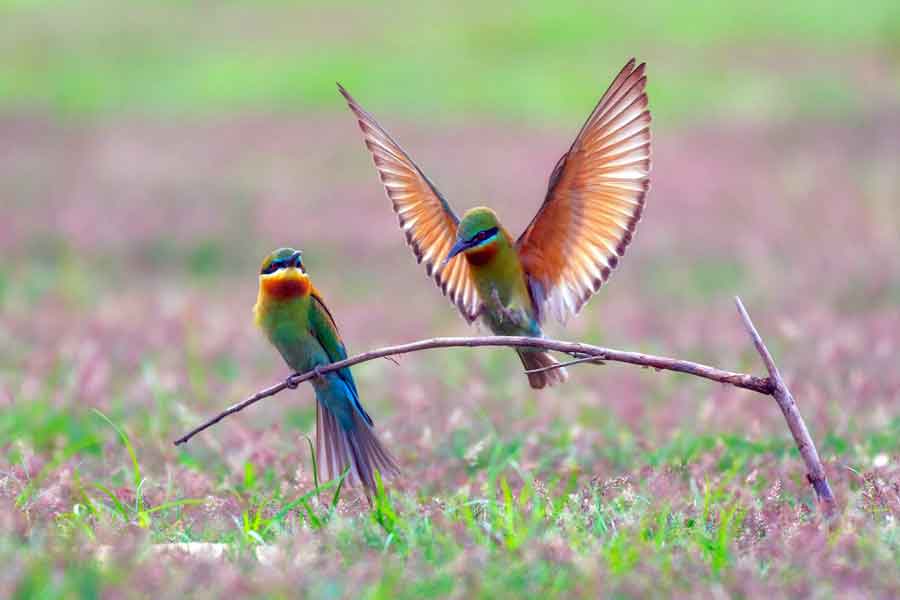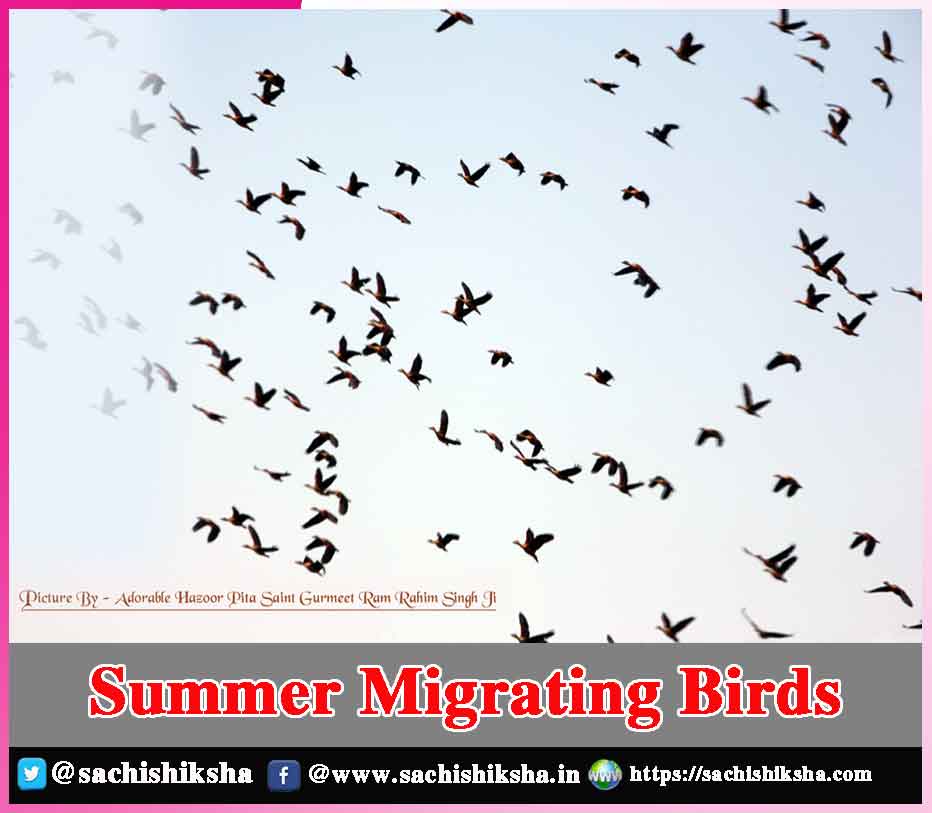Summer Migrating Birds
Introduction: Bird migration refers to the periodic excursion of birds. When bird behaviour at our back yard cages changes, we might realize that birds are moving. Apparently some of the native animals devote longer at the feeders, storing fat stores(a behaviour known as hyperphagia) in preparation for their lengthy journey. Or we might begin recognizing some new species that we fail to frequently observe at our feeders. They could be pausing for petrol on the road.
Also Read:
- Green Shed, Shield to Plants in Summers
- Alternatives to Sugary Drinks This Summer
- Summer Fruits
- Five Yoga Aasans for Summers
- Cosy Colours (Summer Dressing)
- Styles of Summer Time
Table of Contents
Causes of Migration:

Bird Migration to India in Summer:
View this post on Instagram
In the summer, about 26 bird species are estimated to make their way to India. The majority of migratory bird species that visit India during the summer months are altitudinal migrants, which means they migrate upward and downward along height variations. And these birds frequently migrate from a weak-resource zone to a strong-resource zone. Summers are mild in most regions of the country, and food is plentiful, which makes it perfect for birds to reside during the duration of the summer.
Short-distance Versus Long-distance Migration:
Although short-distance migratory patterns are most likely the result of a simple desire for food, the genesis of long-distance migration trends are significantly more complicated. They have developed over thousands of years and are certainly largely influenced by the genetic composition of the birds. They also take into account the environment, location, food availability, day duration, and other aspects.
Migratory Behaviour:
The mechanisms that initiate migratory behaviour differ and are occasionally not entirely understood. Alterations in the length of the day, cooler temperatures, alterations to availability of food, and inheritance can all drive migration. Individuals who have been keeping cage birds for decades have observed that species that migrate have a time of agitation each season, with them constantly flapping towards the opposite end of their cage. Zugunruhe, which translates as migratory agitation, was coined by German behavioral scientists to describe this behaviour. Various bird species, and even populations within the exact same species, may exhibit varying migratory tendencies.
Following are several migrating species to keep an eye open for this summer:
Asian Koel (Eudynamys Scolopaceus)
This Asian Koel travels from Singapore to Southern India. This cuckoo can be observed in the Indian Subcontinent, China, and Southeast Asia, primarily in Singapore, and has unusual coloring and a sharp kooo-koooooo. The Asian Koel is a reproductive parasite that lays eggs in the nests of its hosts, which makes it one of the more dominant combative surviving on the planet.
The male Asian Koel is nearly crow-like in appearance, with a shiny a bluish coloration, whilst the females are brown with white patches and stripes all over their body. In the breeding season, the koels are highly noisy. Males produce the typical “Koo-Ooo” sound, whereas females make a very shrill “Kik-Kik” sound. These koels consume fruit from the wild like figs and berries found in the jungles.
Blue-tailed Bee-Eater (Merops Philippinus)
These varieties of bird travelled from Southeast Asian nations to Northern part of India. This Blue-tailed Bee-eater is a migratory bird that can be found throughout Asia, including China, Pakistan, Bangladesh, Nepal, Myanmar, Sri Lanka, Thailand, Laos, Vietnam, Malaysia, Singapore, Indonesia, and the Philippines, as well as Timor-Leste and Papua New Guinea.
These slim, vividly coloured birds occur primarily in woodland and wetlands settings. Their environment also includes constructed ecosystems such as parks and urban areas. The feathered exterior is brightly coloured, and the birds can reach a height of 30 centimeters. Blue-tailed Bee-eaters, as their name implies, mainly feed on insects that fly such as honeybees, flies, wasps, hornets, and dragonflies. Nesting occurs from February to June, but is most common in Northern India during the summer months.
Eurasian Golden Oriole (Oriolus Oriolus)
This kind of bird travel from Europe and Africa to India. Eurasian Golden Oriole is found in western, central, and southern Europe. The vagrants have been discovered in Madagascar, Seychelles, and even Ireland and Iceland! These oriole subspecies enjoy tropical and subtropical dry woodlands, wide woods, arid grasslands, and arid forests as their habitats. Its striking yellow plumage is difficult to overlook!
Comb Duck (Sarkidiornis Sylvicola):
They travel from South Asia to Haryana (India). The Comb Duck, sometimes known as the ‘Natka,’ is found mostly in Africa south of the Sahara and Madagascar. Several species can also be found in Pakistan, India, Indochina, and southern China. The birds range in weight from 1,200 to 2,900 gms. The mechanism on their bills is unique. Its under parts are white, while their backside is glossy bluish or greenish. These ducks inhabit marshes and swamps and graze mostly on vegetation, seedlings, turf, and tiny aquatic creatures.
These strange ducks migrate to India, specifically the state of Haryana, for the purpose of breeding. They emerge in April and May and depart between August and October.
Blue-Cheeked Bee Eater (Merops Persicus)
These species usually travel from Africa and Europe to India. The Blue-Cheeked Bee Harvester is a little near passerine bird that spends its summer time in India. In terms of global shipping, these birds can be found in portions of Europe, West Asia, and northern and central Africa. These birds are brightly coloured, with a distinguishing blue spot on their cheek. Their bills are somewhat curled down and feature a dark brown-orange band on their throats and a yellowish patch along their chins. They feed on insects that fly such as bees, wasps, and hornets, with the Indian dragonflies being their preference. Their cry is a loud “Prruup” or “Prreee” noise.
Conclusion: Taking a voyage that can span several thousand kilometers round-trip is a perilous and exhausting endeavor. It is a challenge that puts the birds’ mental and physical capacities to the strain. The physical demands of the trek, the absence of proper provisions along the route, harsh conditions, and greater contact with predators all contribute to the trip’s sometimes in dangers.













































